
The title Earl of Morton was created in the Peerage of Scotland in 1458 for James Douglas of Dalkeith. Along with it, the title Lord Aberdour was granted. This latter title is the courtesy title for the eldest son and heir to the Earl of Morton.

Lord Herries of Terregles is a hereditary title in the Peerage of Scotland. It was created in 1490 for Herbert Herries with remainder to his heirs general.
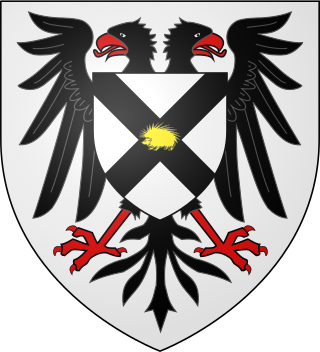
Earl of Nithsdale was a title in the Peerage of Scotland. It was created in 1620 for Robert Maxwell, 9th Lord Maxwell, with remainder to heirs male. He was made Lord Maxwell, Eskdale and Carlyle at the same time. The title of Lord Maxwell had been created in the Peerage of Scotland in 1445 for Herbert Maxwell.
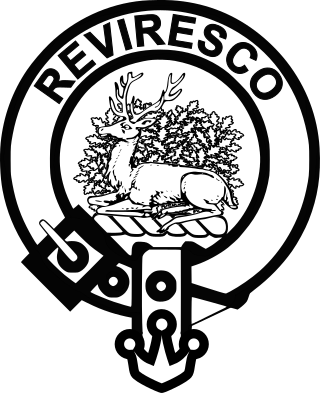
Clan Maxwell is a Scottish clan of the Scottish Lowlands and is recognized as such by the Lord Lyon King of Arms. However, as the clan does not currently have a chief, it is considered an armigerous clan.
Earl of Dirletoun was a title in the Peerage of Scotland. It was created in 1646 for James Maxwell by King Charles I. Lord Dirletoun's only male heir died in infancy, and the Earldom became extinct on his death. He had two daughters. The first, Lady Elizabeth, married William Hamilton, 2nd Duke of Hamilton then Thomas Dalmahoy, and the second, Lady Diana, married Charles Cecil, Viscount Cranborne.
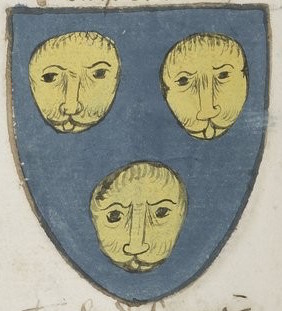
The McGhee family is an ancient lowland family of Scotland, established as landowners in Galloway since at least the 13th century. Both the Clan Donald and the Clan Mackay claim it as a sept. Historically, however, the Mackays are in fact an offshoot of this family rather than vice versa. The ancient origins of the McGhees are uncertain, though they were probably Gaels from Ireland who took part in the conquest of Galloway between the 9th and 11th centuries. Their property in Kirkcudbrightshire was significantly extended during the reign of the Stuarts. The family has always been self-consciously lowland and, almost uniquely among prominent Scottish families, remained entirely indifferent to the Clan system, as historians have noted:
"With such a variety of spellings many held lands, bore personal arms and sometimes held important positions and yet none, other than the Chief of Mackay, has been recognised in the chiefship of the kindred."

The origins of Clan MacCulloch are unknown, but there is a consensus that the family was one of the most ancient families of Galloway, Scotland, and a leading medieval family in that region. Despite the obscurity of the early history of the clan, the history and genealogies of the family are well documented in Walter Jameson McCulloch's History of the Galloway Families of McCulloch, which provides extensive footnotes for original Scottish charters, correspondence, and other primary source documentation. The latter provides family history for the following lines: Myretoun, Ardwell, Killasser, Torhouse, Drummorrell, Inshanks and Mule, Torhousekie, Cardiness, Barholm, Kirkclaugh, Auchengool, and Ardwall.

Clan Napier is a Lowland Scottish clan.

Clan Johnstone is a Border Reiver Scottish clan.
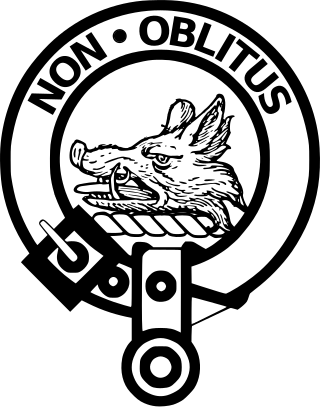
Clan MacTavish is an Ancient Highland Scottish clan with Irish origins.
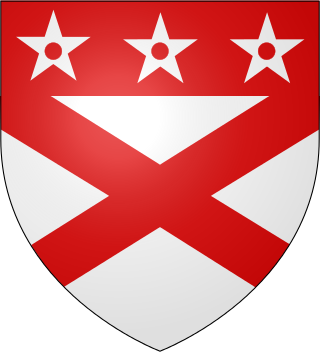
Clan Jardine is a Scottish clan of the Scottish Lowlands.

Clan Strange, also known as Clan Strang, is a Lowland Scottish clan.

The de Trafford Baronetcy, of Trafford Park in the County Palatine of Lancaster is a title in the Baronetage of the United Kingdom.
William Jardine Herries Maxwell of Munches was a Liberal Unionist politician in Scotland.
John Maxwell, 4th Lord Maxwell was a Scottish nobleman and patriarch of the Border Family / House / Clan of Maxwell.
Wellwood Herries Maxwell of Munches was a Scottish Liberal politician who sat in the House of Commons from 1868 to 1874.

The Corrie family, also known as the Currie family, was a Scottish family which was once seated in what is today the civil parish of Hutton and Corrie, in Annandale, Dumfriesshire, Scotland. The leading branch of the family were the Corries of that Ilk. Members of the family are on record in the Middle Ages. The family held numerous lands, but lost the lands from which they derived their surname, with the marriage of an heiress, sometime during the reign of James V, King of Scots.

Clan Little is a Scottish clan of the Borders. The clan does not currently have a chief and is therefore considered an armigerous clan. The Clan Little Society had a Guardian in place of a clan chief but, since his death in 2007, no suitable successor has appeared.
John Maxwell, 8th Lord Maxwell was a Scottish Catholic nobleman. In 1581 he was created Earl of Morton, and in 1587 he travelled to Spain where he took part in the planning of the Spanish Armada.

The Battle of Dryfe Sands was a Scottish clan battle that took place on 6 December 1593, near Lockerbie, Scotland. It was fought between the Clan Maxwell and Clan Johnstone after a hundred years of feuding between them. The Johnstones won a decisive victory over the Maxwells.















